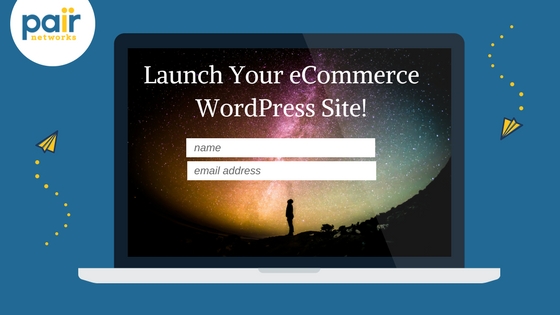
1. Start a Blog
Blogging isn’t just for bloggers. You can blog too! You’ll experience several benefits when you start your business blog. Writing regular blog posts improves SEO and increases traffic to your eCommerce site. Having fresh blog content means your site has more pages for people to view, share, and link to. It also means search engines will rank your site higher because search engines notice when a site is updated regularly. When you publish a new blog post, it shows search engines your site is active, which means better SEO for you.
You can also write new blogs based on keywords and popular search queries. Writing compelling content around relevant keywords will help you rank for those keywords and get more traffic to your site. Need blog topics? Just give the people what they want. Every time a customer asks a question, you have a new blog topic. Answer your most frequently asked questions with a blog post and you’re not only increasing brand awareness, but you’re also establishing yourself as an authority in your industry and improving your eCommerce SEO.
2. Choose Your Own Host
Did you know your web host can affect your site’s search ranking? Your web host could slow down your page speed or, if you’re generating a lot of web traffic, crash your site. If your server isn’t equipped with the right resources, it could crash at the sudden uptick in web traffic you’re going to see after implementing these six tips. Instead of relying on the web host of your website builder, you can choose your own web host and decide what kind of WordPress hosting service fits your needs.
3. Monitor Abandoned Carts
People often add items to their digital carts to save them for later or maybe change their minds as they’re checking out. As much as 67% of shopping carts are abandoned before the sale is completed. No matter the reason for abandonment, you can use an abandoned cart as an opportunity to make another offer. Maybe they got distracted before making the purchase or maybe they’re just waiting for payday. Either way, send them an abandoned cart exit-offer to remind them of their potential purchase and give them an incentive to buy now, like a discount code.
4. Cross-Sell to Your Audience
Let’s say you already have 20 customers. If each of your customers buys an additional item from your eCommerce site, you’ll have increased your revenue without increasing your advertising expenses. So, how do you encourage your customers to make additional purchases? Before they checkout, offer a complementary product. For example, if you’re selling a paint brush, you could cross-sell paint or canvas. Everyone loves convenience so giving them the option of buying everything in one place will help you cross-sell to your audience.
5. Advertise Online
With everyone on social media, there’s no better place to advertise. Whether your audience prefers Twitter, Facebook, Instagram, or LinkedIn, you can spend a little money on digital ads and get a lot of site traffic in return. Facebook has extensive targeting options, which means you can narrow down your Facebook audience to reach your target audience.
When you feel more comfortable advertising online, you can try using Google Adwords. Google Adwords requires extensive keyword research, well-written ad copy, and cohesive landing pages. Adwords will show your ads to people who search for the keywords you’re bidding on. Just like with Google’s search engine, your ads can rank higher or lower depending on the search query and how well your ad performs. Ads that perform well have lower cost-per-click than ads that need improvement. If you’re not sure where to get started, check out the Google Adwords Certification.
As you build your eCommerce WordPress site, stop by and see us at Wordcamp Pittsburgh on September 9, 2017! We can answer all of the WordPress hosting questions you encounter as you build your new eCommerce site!




